

Retail media is exploding, and rightfully so. Placing digital ads on a retailer website are akin to an endcap or an in-aisle POS shipper display in a brick-and-mortar store. Online placement is critical, and it must be eye-grabbing. The intention is to engage shoppers at various stages of the path to purchase, from awareness to consideration to conversion.
But one size doesn’t fit all. The availability and placement of paid ads online differs across retailer websites. Depending on the website, digital ads can appear on the home page, category pages, product detail pages (PDP) — either your own or a competitor’s — and search result pages (SERP). Profitero’s research finds that brands can get an average sales lift of 19% by moving into a top 10 spot on Page 1 through paid sponsorship. What’s more, we found sponsored products own the #1 spot on Amazon for 66% of the keywords studied. Paid ads also influence organic results, according to other industry studies.
In this blog, we highlight the retail media / digital advertising capabilities of 7 highly trafficked eCommerce sites in the U.S. — Amazon, Best Buy, The Home Depot, Instacart, Kroger, Target and Walmart — comparing and contrasting what you can and can’t do.
A quick look at the different Retail Media | Digital Ad capabilities supported by retailer websites
Source: Profitero
|
Amazon (1P) |
Best Buy |
Home Depot |
Instacart |
Kroger |
Target |
Walmart |
|
|
Buy sponsored ads to rank higher in search |
Y |
Y |
Y |
Y |
Y |
Y |
Y |
|
Buy display ads above or to the side of search results |
Y |
Y |
Y |
Y |
Y |
Y |
Y |
|
Buy video ads in search results |
Y |
Y |
N |
N |
N |
Y |
N |
|
Buy editorial reviews in search results |
Y |
N |
N |
N |
N |
N |
N |
|
Buy ads on a competitor's product detail page |
Y |
Y |
N |
N |
N |
N |
Y |
|
Conquest a competitor's brand keywords |
Y |
Y |
N |
Y |
N |
Y |
N |
|
Sponsor livestream events |
Y |
N |
N |
N |
N |
N |
Y |
|
Buy retargeting ads on other 3rd party sites |
Y |
Y |
Y |
N |
Y |
Y |
Y |
Let’s dig in deeper, highlighting some examples to compare and contrast what brands can / can’t do with digital advertising on these websites. We’ll also offer some pro tips as you think about your digital retail media strategy and execution.
Amazon: Retail media / digital advertising
Amazon Advertising, the retailer’s retail media arm, has become a large and fast-growing revenue stream for the company. So much so that Amazon is steadily gaining ad revenue share versus the likes of Google and Facebook. Amazon’s digital ad revenue was forecast to have grown by 55% in 2021, according to eMarketer. Search represents 70.5% of ad revenue for Amazon. So, if a good portion of your brand’s digital ad budget (or total ad budget, for that matter) isn’t dedicated to Amazon, you’re missing a huge opportunity to (1) get found; and (2) amplify your product content to maximize conversion potential.
PRO TIPS:
-
Optimize paid search campaigns — sponsored products, banner ads, etc. — by choosing target keywords that align with Amazon search trends. Profitero conducts a lot of keyword research on Amazon — check out this example.
-
Having a strong defensive strategy on Amazon is critical. You need to own your own brand keywords or someone else will. But don’t forget: Turnabout is fair play. Watch for opportunities to conquest your competitor’s keywords too. Even better, buy ads on their product pages and sponsor feature spots on the PDP under the “Products related to this item” section. Amazon is one of only a handful of sites where you can conquest another brand’s keyword in search results.
-
Take advantage of all the capabilities Amazon supports to help shoppers find your products, many of which are unique or different from other retailers, e.g.:
-
Leverage Sponsored Brands video ads on Amazon SERP; Case study: Barilla saw a 3x higher click-through rate using video ads in Amazon search results, compared with static ads (Sponsored Brands and Sponsored Products), when it was trying to raise awareness for its new legume pastas.
-
Sponsored Brands editorial reviews on SERP (the only retailer we studied that supports this)
-
Participate in Amazon Live (streaming) events
-
PRO TIP: Sponsor products and brands for relevant and trending keywords on Amazon
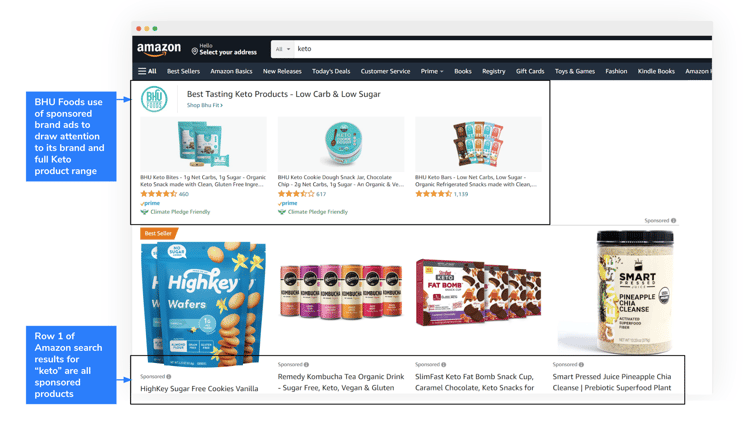
PRO TIP: Put a strong defensive strategy in place by owning your brand keywords on Amazon
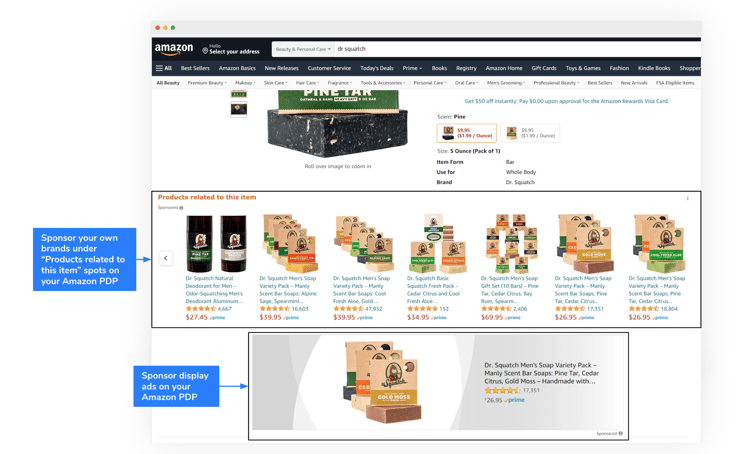
PRO TIP: Buy video ads on Amazon’s search results page to drive higher traffic
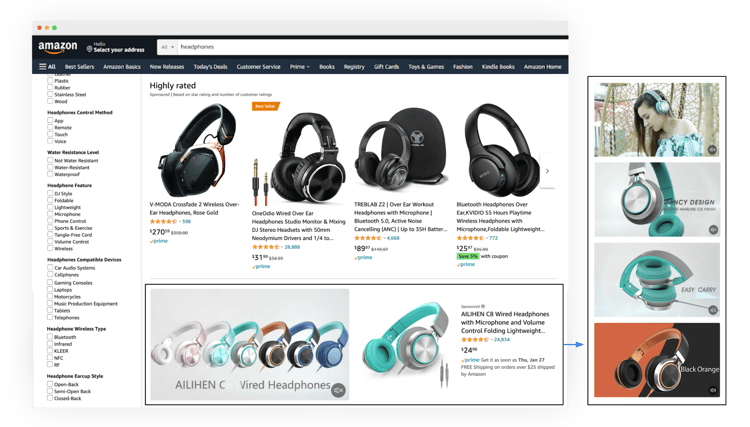
PRO TIP: Sponsor editorial reviews on Amazon’s search results page
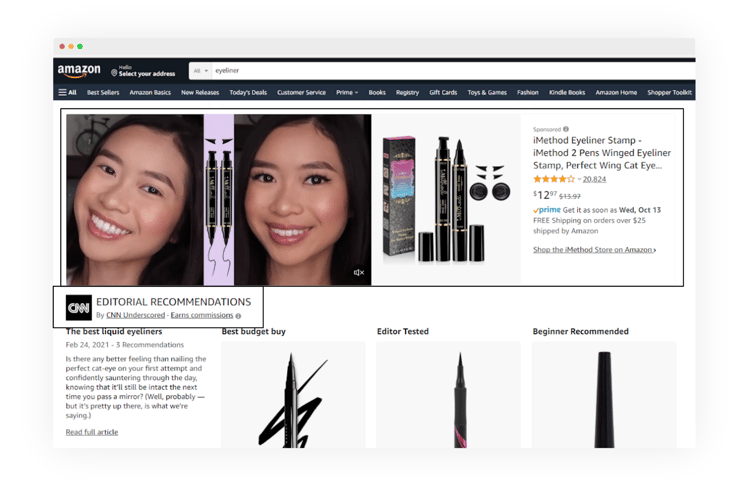
PRO TIP: Take advantage of sponsorship opportunities on Amazon Live
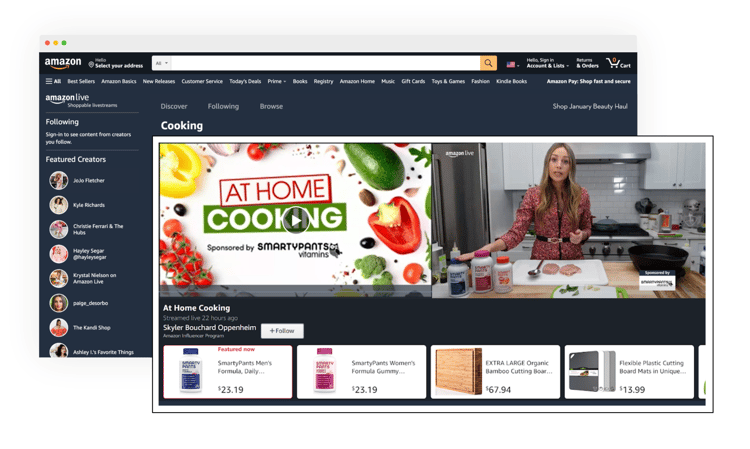
Best Buy: Retail media / digital advertising
Best Buy supports many of the same retail media capabilities as Amazon does. A notable exception is that brands currently can’t sponsor editorial reviews in Best Buy search results; and Best Buy doesn’t have livestream capabilities on its site (at least not yet). However with the launch of its new in-house media company Best Buy Ads in January 2022, brands need to keep an eye out for expanded features, as well as more first-party data & insights from the retailer to leverage.
PRO TIPS:
-
Get familiar with Best Buy Ads, and plan and allocate your ad budget accordingly.
-
Take advantage of Best Buy’s latest ad solutions, which span the gamut from paid search and sponsored products to onsite and offsite display ads.
-
Sponsor video ads on Best Buy PDPs — on competitors’ PDPs or complementary products; Best Buy is one of the few retailers besides Amazon that currently supports this capability.
PRO TIP: Buy sponsored display ads on competitor PDPs on Best Buy
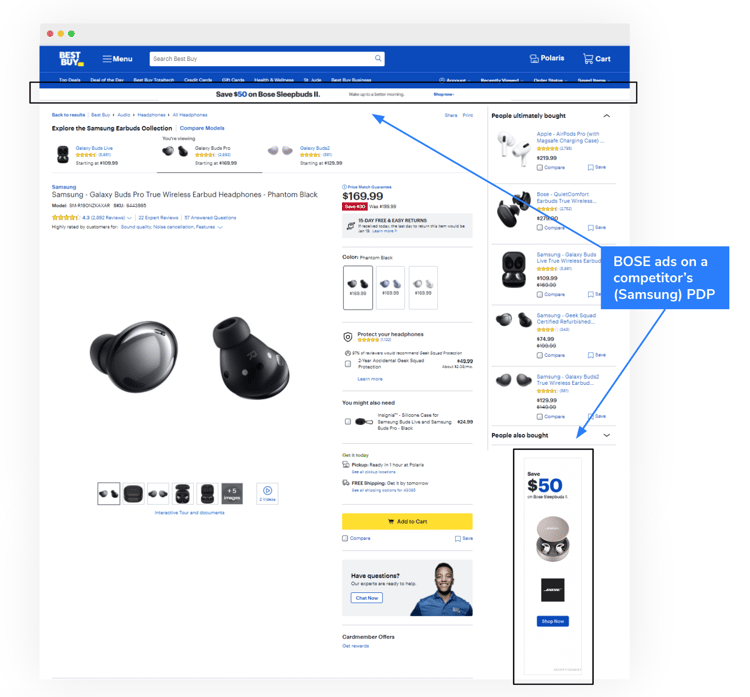
PRO TIP: Sponsor video ads on competitor or complementary product pages on Best Buy
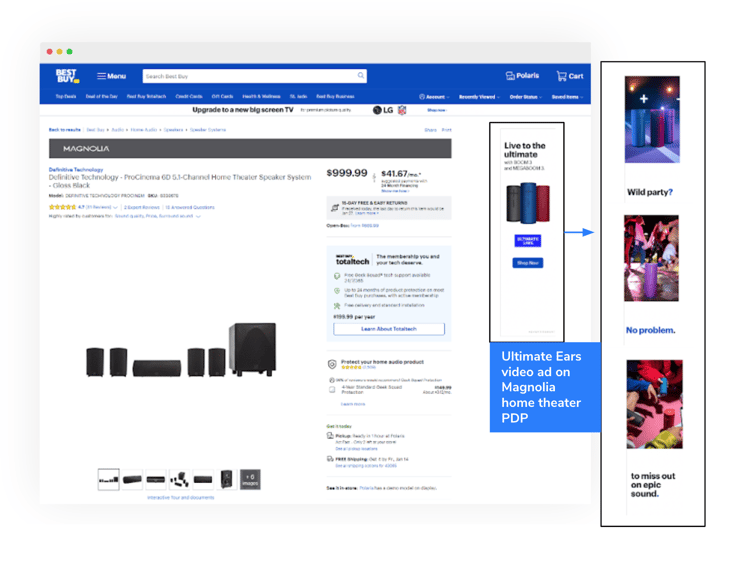
The Home Depot: Retail media / digital advertising
Retail Media+, The Home Depot’s proprietary ad network, gives brands selling at Home Depot the ability to buy ad placements on its website and social channels. Brands partnering with Retail Media+ see an average return of 2X or greater on their ad spend, according to the retailer.
PRO TIPS:
-
Take advantage of all the digital media capabilities offered by The Home Depot / Retail Media+, e.g.:
-
Sponsor placement in-grid in search results
-
Sponsored banner ads at the top of SERP on HomeDepot.com
-
-
Leverage retargeted ads on social media and other offsite channels to drive shoppers back to The Home Depot.
PRO TIP: Sponsor top-of-page banner ads and in-grid placement on Home Depot
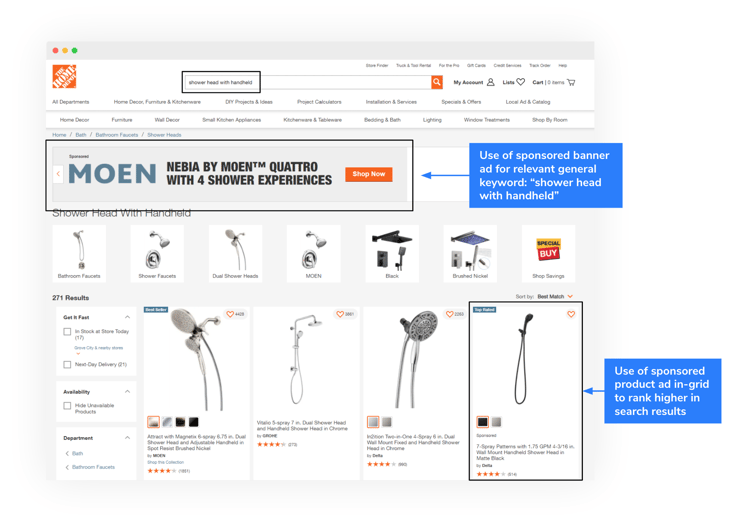
PRO TIP: Use retargeting ads on social channels to drive traffic to HomeDepot.com
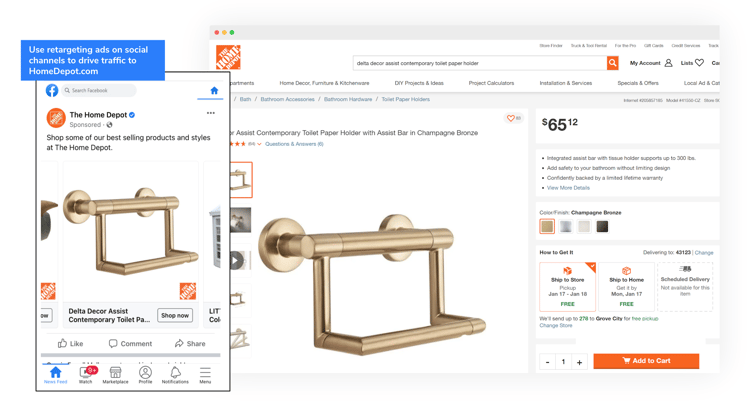
Instacart: Retail media / digital advertising
Your biggest goal on Instacart, probably more so than any other retailer we analyzed, is getting found and purchased early by new customers. This is because “Buy It Again” badges and a “Your Items” section (to encourage repeat buying) play prominently on Instacart’s platform. By the 10th order, 25% of Instacart conversions come from the Your Items section. So, it’s imperative that your ad strategies focus on increasing visibility and capturing the attention of new customers.
PRO TIPS:
-
While you can’t control assortment on Instacart, you can control the products you advertise. So invest in paid search to be among the top spots in search results.
-
Invest early because there is a first-mover advantage to getting in the basket and influencing repeat buying on Instacart. Previously bought products tend to rank high in Instacart’s search algorithm and often get the “Buy It Again” badge.
-
Use all of Instacart’s advertising and promotional vehicles at your disposal, e.g., Free delivery and “Buy multiple items, get $X off” promos, to build baskets and attract first-time buyers.
PRO TIP: Take advantage of all the paid sponsorship opportunities on Instacart to generate awareness and build baskets
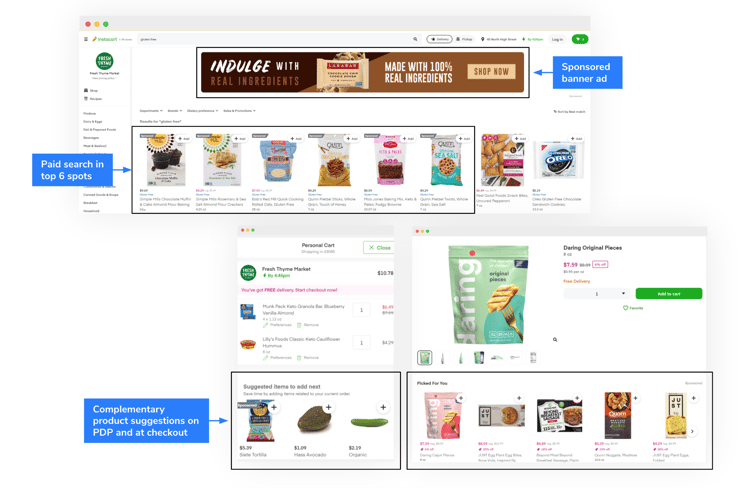
Kroger: Retail media / digital advertising
Kroger basket sizes are 3X bigger online than in-store, according to information shared during a past Profitero Commerce Live event. This means a big time investment for shoppers to build online orders. Similar to how you should be thinking about Instacart (and many other grocery stock-up oriented sites), your goal should be getting into consumer carts early. Do this by serving up relevant ads and offers — and at Kroger, brands can do it on a much more personalized level by leveraging the vast database of first-party data the retailer has on Kroger Plus Card members (a huge competitive advantage Kroger has versus many of its competitors is its popular loyalty program). Putting this data to work for brands is at the core of what the Kroger Private Marketplace platform by Kroger Precision Marketing powered by 84.51 does.
PRO TIPS:
-
Promote to get in Kroger shopper carts early so you’re more likely to show up near the top of search results and “Buy Again” (past purchase) lists, making it much easier for shoppers to build their next cart.
-
Sponsor banner display ads and Product Listing ads (including Boosted Search, Start My Cart and My Sale Items) on Kroger.com — viewable when Kroger Plus (loyalty program) shoppers are logged in.
-
Personalize ads to individual shoppers based on past purchase behavior of Kroger shoppers (the retailer reports capturing data on 96% of its sales). Kroger Precision Marketing has reported that its precisely targeted ad activations have resulted in household penetration gains from both new and lapsed households, with at least 3x more sales than the average consumer.
-
Leverage Kroger’s seasonal events calendar to buy Static and Targeted Ads on some of the retailer’s most highly trafficked pages.
PRO TIP: Use Boosted Search to get in the cart early; then leverage Start Your Cart, Buy Again and Sale Items to drive repeat patronage
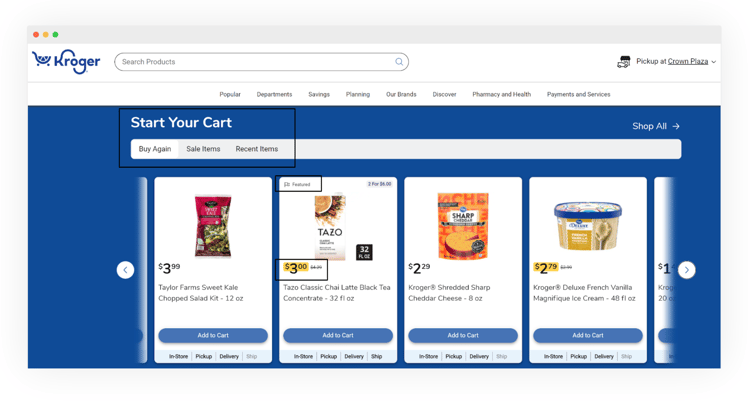
PRO TIP: Precisely targeted ad activations to past purchasers generate 3x more sales than the average consumer, according to Kroger Precision Marketing
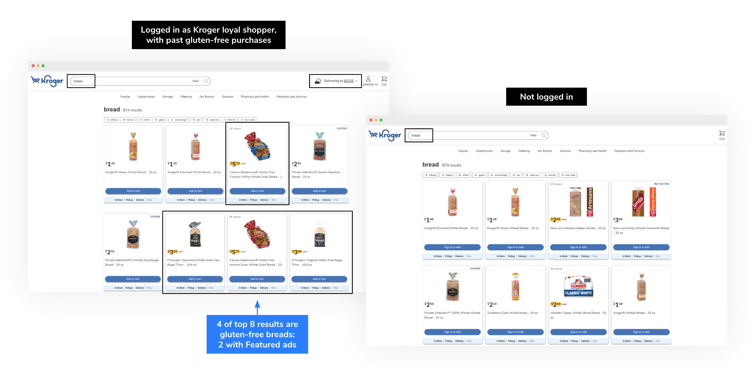
PRO TIP: Buy ads on some of Kroger’s most highly trafficked pages based on the retailer’s seasonal calendar (e.g., Super Bowl)
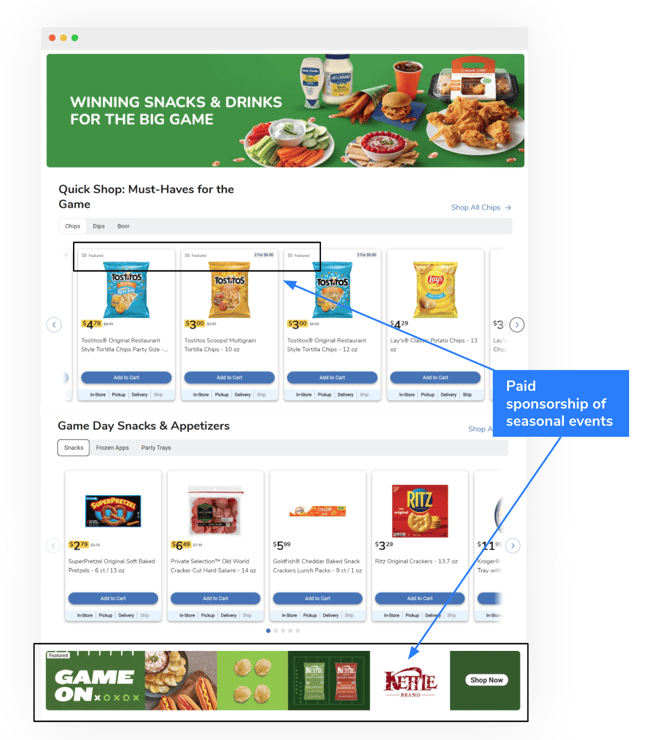
Target: Retail media / digital advertising
Target overhauled its retail media group in 2019, rebranded as Roundel, and set its sights on modeling its ad business after Amazon. The retailer now offers many similar digital ad capabilities as Amazon to help brands get and keep their products front and center with Target guests shopping on its website. Last year, Roundel integrated self-service platform CitrusAd into its offer in 2021, making it much easier for brand advertisers to launch and manage their own Target Product Ad campaigns, or work through CitrusAd managed services. Access to real-time reporting dashboards came along with the integration, enabling brands to quickly adjust campaigns as needed.
PRO TIPS:
-
Place bets on category-specific bidding on Target, since the retailer prominently displays category filters at the top of search results.
-
Leverage “Search and Browse” ad placements since Target guests often use the retailer and its website for inspiration prior to purchasing.
-
Prioritize search placement ads on Target.com before investing in ads on product detail pages. This is because Target guests are 2x more likely to convert when interacting with search, according to digital ad agency Pacvue.
PRO TIP: Sponsor hero SKUs not already ranking organically on Target.com
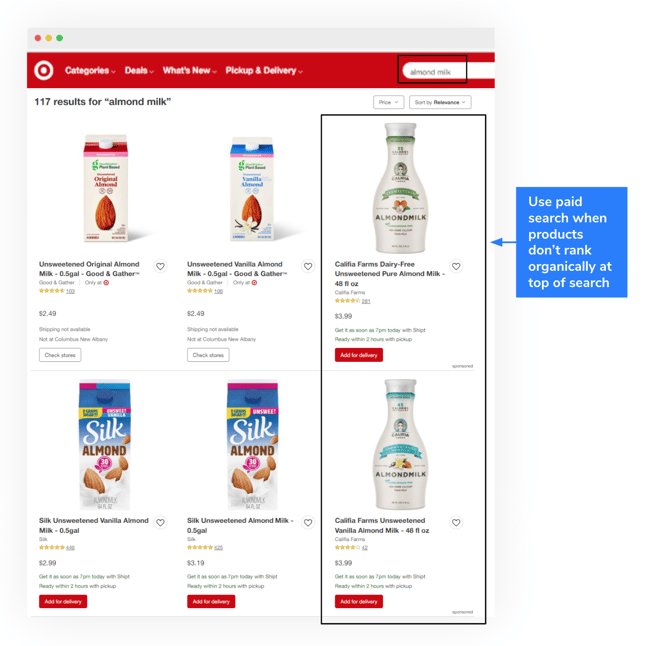
PRO TIP: Place bets on category-specific bidding on Target.com
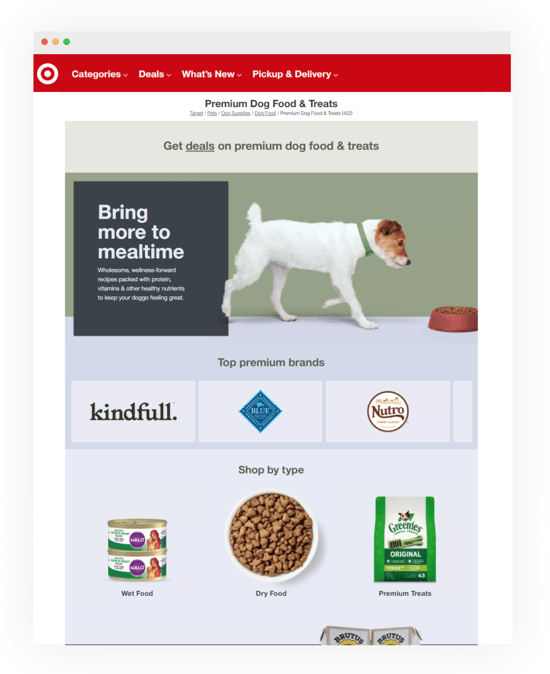
Walmart: Retail media / digital advertising
Walmart is investing heavily in its online paid media offerings — namely via Walmart Connect — which opens up more opportunities for brands to attract the attention of Walmart shoppers. Our research shows that Walmart.com has tripled its number of page 1 sponsored ad spots since 2020 (albeit it still trails Amazon). This makes it all the more critical for brands to have a sound retail media strategy in place at Walmart, with Walmart Connect solutions (paid search, Brand Amplifier, Display) an integral part of your JBP efforts. Walmart will expect it. And the ROI could be worth it for brands too. According to Pacvue’s latest research, Walmart Connect Sponsored Ads click-through rates increased 200% year-over-year in 2021, while Sponsored Ads return on advertising spend (ROAS) increased 42% year-over-year.
PRO TIPS:
-
Make sure your Walmart JBP and trade spend include your plans with Walmart Connect.
-
Leverage paid search ads to test & learn what types of content (e.g., hero images) work to deliver the best results.
-
Run both Automatic and Manual Campaigns on Walmart.com.
-
Auto Campaign ads are served to relevant customers based on Walmart’s algorithm, and useful when launching new products to maximize impressions
-
Manual Campaign ads are based on keywords selected by brand advertisers, and useful to promote hero products with more granular targeting. Something to keep in mind: Be sure your product content is optimized for these keywords. (See our product content cheat sheet.) According to Pacvue, products must rank in the top 128 spots organically on Walmart.com before a brand can sponsor the product on its site — meaning Walmart puts a greater emphasis on the relevancy of search results versus Amazon, where pretty much anything goes.
-
-
Pay attention to Walmart’s seasonal and inspirational events calendar to determine where and when it makes sense to pay to play.
PRO TIP: Use Manual Campaign ads to promote hero SKUs based on relevant keywords for your product or category
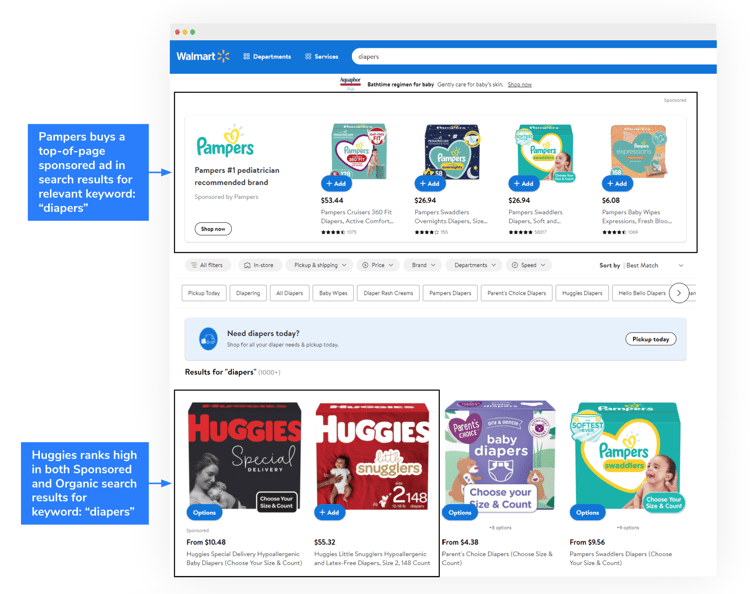
PRO TIP: Buy ads on competitors’ product detail pages on Walmart.com
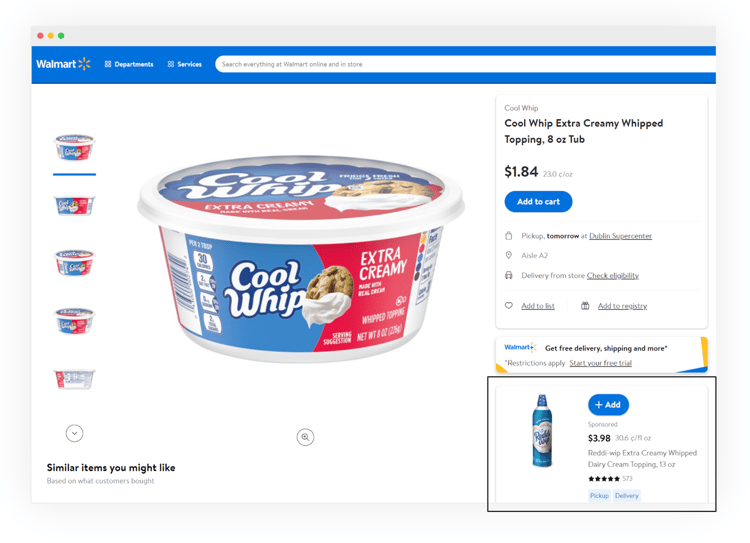
PRO TIP: Use Search Brand Amplifier to call attention to your brand and relevant SKUs on Walmart
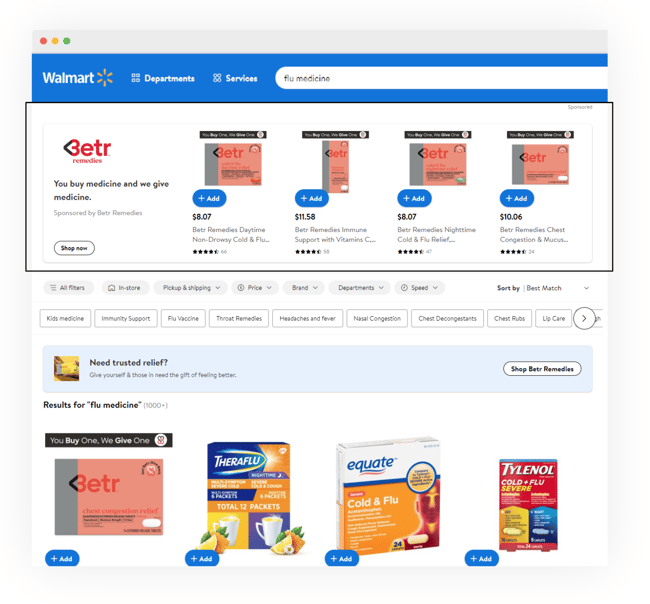
PRO TIP: Pay to play based on Walmart’s seasonal and inspirational calendar
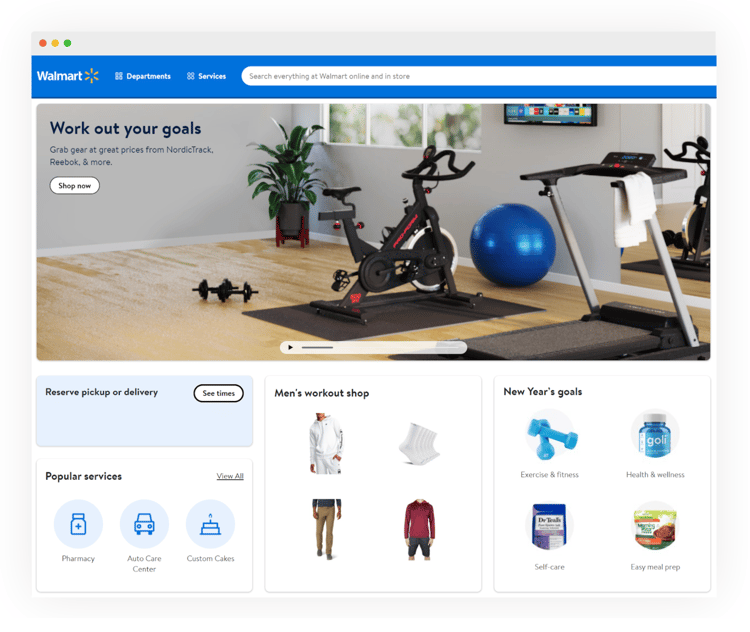
So what? Now what?
-
Identify and prioritize your target keywords. While it may seem intuitive, this is a critical step for brands just starting to operationalize paid search capabilities as well as veterans who’ve been at it for a while. Ask yourself: Are we winning all the keywords that matter in our category? This is important because our research shows that optimizing for relevant, high-frequency keywords gets you 2X the sales lift as low-frequency keywords. Thus, you should regularly monitor search frequency and volumes to align your keywords — for both organic and paid sponsorship — with the most frequently searched terms.
-
Keep ad spend flexible to move budgets around easily as needed. The importance of budget fluidity in the fast-paced digital world cannot be overstated. This is especially true when new keywords or competitors start trending in your categories and you want to optimize your ad campaigns around those trends. Keeping your ad spend flexible will allow you to adjust your paid search strategies as needed to focus on the highest ROI terms.
-
Make sure products you sponsor are ready to shine. This means having best-in-class product content, positive ratings & reviews, and a solid in-stock position (i.e., your products are available). There’s nothing worse than wasted ad spend, throwing money at items that have sub-par content to convert or are out of stock, or having your brand keywords conquested by a competitor when you’re out of stock.
-
Know which products convert best to get higher returns from your ad targeting. Profitero analysis has shown that about 60% of sponsored products have suboptimal conversion rates. So, we believe there’s a big opportunity for brands to improve the efficiency of their ad spend, prioritizing opportunities where you’re likely to get the biggest bang for your buck. Using a framework like Profitero’s Traffic & Conversion (T&C) matrix can help identify your unsung heroes — i.e., high-converting products in your portfolio that already have great content but are ripe for increased optimization activity to improve search placement and drive up glance views.
-
Make the most of your retail media budget. It’s good to know which of your products already rank high in organic (and paid) search by routinely monitoring and benchmarking your share of Page 1 and share of voice vis-a-vis competitors. You can do this by leveraging insights from your retailers’ first-party data along with a digital shelf tool that gives you a view into your competitors’ placement. This way you can be as efficient as possible with your ad budget, pulling back ad spending on highly ranked products and instead reallocating budget elsewhere.
| Contact us to learn more about how Profitero’s insights can help you optimize your search placement across different retailer sites. |


























